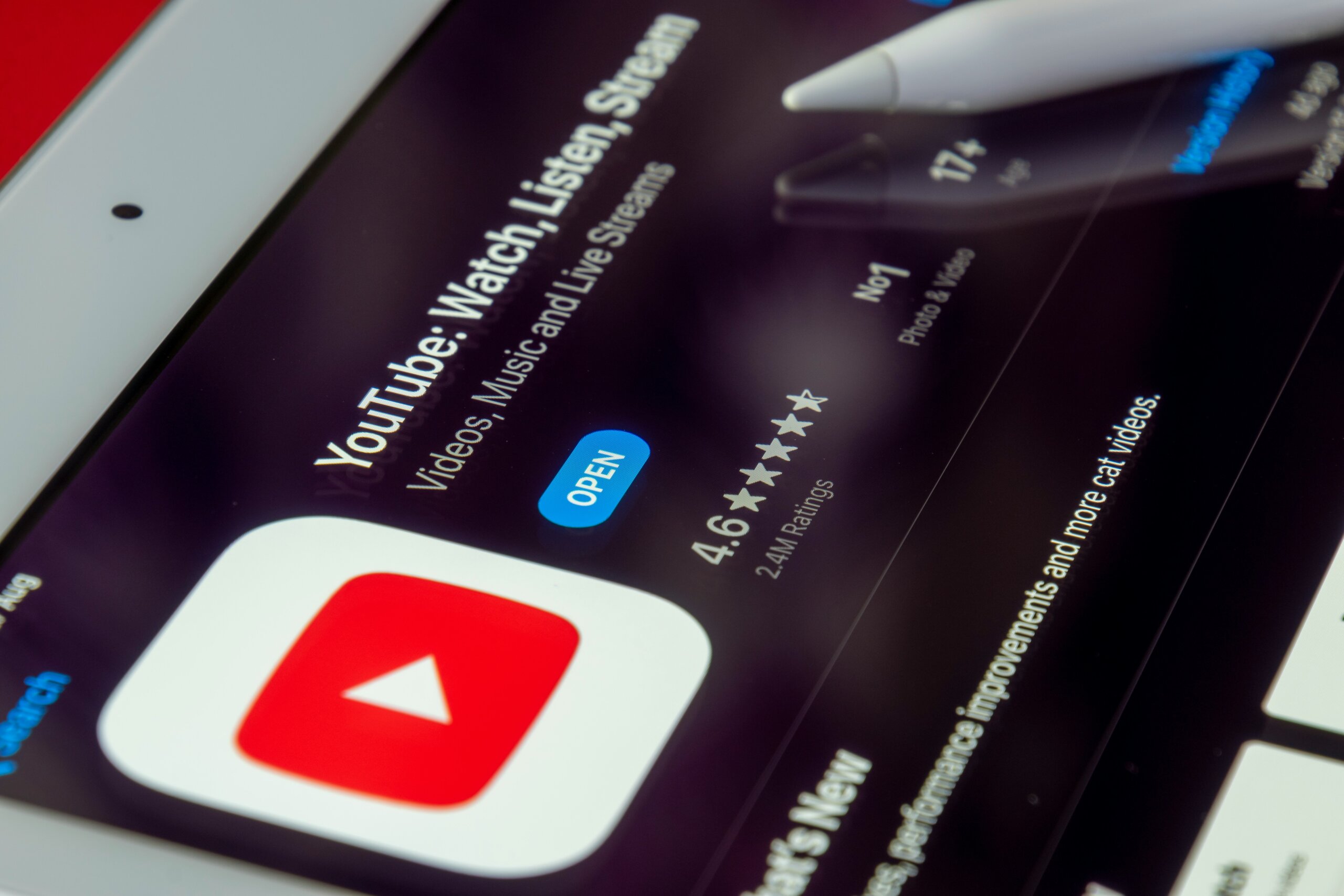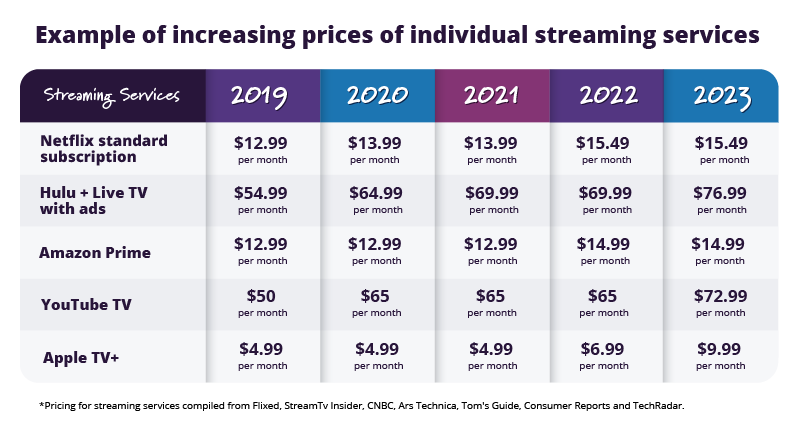Think about the way you watch movies and TV. How has it changed in your lifetime? In the last 20 years, we’ve transitioned from renting DVDs at local stores and gas stations to having the biggest Hollywood movies premiere at home on our laptops. But, with all the changes happening, is streaming starting to look more and more like regular old cable?
The Start of the Streaming Universe
Netflix continues to be the main go-to for streaming despite the best efforts of its competitors. Starting off as a DVD-rental company, Netflix debuted its video-on-demand service in 2007. AOL, Comcast, Facebook, MSN, Myspace and Yahoo came together to publicly launch Hulu the following year. What we now know as Amazon Prime Video debuted in 2006 as Amazon Unbox.
These are the traditional “big 3” when it comes to streaming.
Over the years, they’ve been joined by the likes of Apple TV+, Paramount+, Hulu, YouTube TV and more. Smart TVs, which began gaining popularity around 2010, further jump-started the popularity of streaming with their easy access to streaming apps.
Streaming’s Unprecedented Surge
Streaming services — a large reason why DVDs were rendered obsolete — understand how quickly they can go out of business if they can’t keep up. They are constantly upping the ante to grow their customer base and go head-to-head with their biggest competitor, cable networks.

Original content is their wild card.
Netflix’s first original show was “House of Cards,” which premiered in 2013 and became a smash hit, even earning several Emmy nominations. Hulu and Prime Video’s original content started around the same time but took a bit longer to create the same buzz. Over time, they even got Hollywood’s biggest stars, directors, producers and writers to work on their original content, adding to their pull with audiences and taking the quality even higher.
The COVID-19 pandemic gave streaming services a huge boost. With the whole world spending even more time indoors, more eyes were online for content than ever before. Even major blockbuster films premiered on streaming platforms, pushing cable networks to the side.
Streaming Becomes Cable Becomes Streaming
As streaming has grown over time, it has naturally adapted to the market and made changes. Some say it is slowly morphing into cable, much to the dismay of consumers who prefer it specifically for its differences. Those differences are shrinking.
- Numerous ads and commercials
- Major price hikes
- Tons of original content
Some streaming services are joining forces with service providers to form bundles. Verizon now offers a bundle with Netflix and Max, with ads, for just $10/month to specific customers.
As customers are responding well to these bundle options, and with a variety of proposed mergers and acquisitions, it’s likely cable networks and streaming platforms will continue to bond. And now that the number of streaming platforms has grown, consumers are also tired of splitting their money and subscriptions across them all. Many would rather opt into a bundle than be left to pick and choose which ones they want and when. Plus, the providers appreciate that it’s more difficult for customers to unsubscribe from one individual platform than it is from a bundle of several mixed in with their cable network. Most of the time it’s more bang for your buck anyway!

Uncommon Ideas to Save a Few Bucks
- Select Ad-Supported Plans – Several streaming services offer lower-priced tiers, including advertisements. Choosing these plans can reduce monthly expenses while providing access to a wider range of content.
- Use the Public Library and Free Services – Many public libraries offer free access to streaming content with a library card. The Clear Lake Public Library uses Hoopla to offer free digital movies, TV shows and more. Free, ad-supported streaming services like Tubi or Pluto TV offer a variety of content without a subscription fee.
- Cut Down on Underused Subscriptions – Evaluate your subscriptions regularly and cancel any that you’re not using enough to justify the cost. This can help avoid paying for services that aren’t providing sufficient value.
- Wait for Series Completion – Instead of maintaining a subscription to watch a series over several months, wait for all episodes to be available and then subscribe for a single month to binge-watch the series.
Influencing the Streaming Revolution
What do you think about the changes happening to streaming? Will it impact how you watch your favorite shows and movies? Would you sign up for a bundle to combine cable and streaming? The most interesting part is that these companies largely make their changes based on how consumers move. So, don’t forget that you and your viewing habits set the stage for what comes next for streaming and cable.




